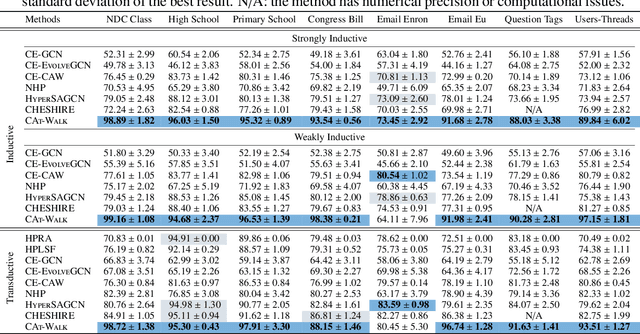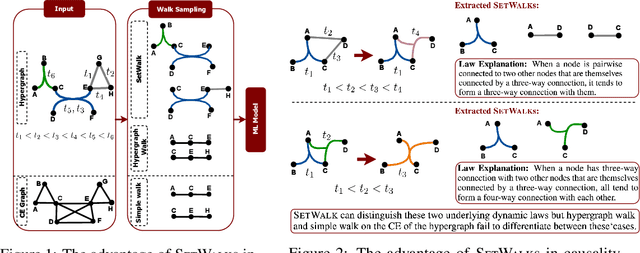Sadaf Sadeghian
HyperBrain: Anomaly Detection for Temporal Hypergraph Brain Networks
Oct 02, 2024


Abstract:Identifying unusual brain activity is a crucial task in neuroscience research, as it aids in the early detection of brain disorders. It is common to represent brain networks as graphs, and researchers have developed various graph-based machine learning methods for analyzing them. However, the majority of existing graph learning tools for the brain face a combination of the following three key limitations. First, they focus only on pairwise correlations between regions of the brain, limiting their ability to capture synchronized activity among larger groups of regions. Second, they model the brain network as a static network, overlooking the temporal changes in the brain. Third, most are designed only for classifying brain networks as healthy or disordered, lacking the ability to identify abnormal brain activity patterns linked to biomarkers associated with disorders. To address these issues, we present HyperBrain, an unsupervised anomaly detection framework for temporal hypergraph brain networks. HyperBrain models fMRI time series data as temporal hypergraphs capturing dynamic higher-order interactions. It then uses a novel customized temporal walk (BrainWalk) and neural encodings to detect abnormal co-activations among brain regions. We evaluate the performance of HyperBrain in both synthetic and real-world settings for Autism Spectrum Disorder and Attention Deficit Hyperactivity Disorder(ADHD). HyperBrain outperforms all other baselines on detecting abnormal co-activations in brain networks. Furthermore, results obtained from HyperBrain are consistent with clinical research on these brain disorders. Our findings suggest that learning temporal and higher-order connections in the brain provides a promising approach to uncover intricate connectivity patterns in brain networks, offering improved diagnosis.
CAT-Walk: Inductive Hypergraph Learning via Set Walks
Jun 19, 2023



Abstract:Temporal hypergraphs provide a powerful paradigm for modeling time-dependent, higher-order interactions in complex systems. Representation learning for hypergraphs is essential for extracting patterns of the higher-order interactions that are critically important in real-world problems in social network analysis, neuroscience, finance, etc. However, existing methods are typically designed only for specific tasks or static hypergraphs. We present CAT-Walk, an inductive method that learns the underlying dynamic laws that govern the temporal and structural processes underlying a temporal hypergraph. CAT-Walk introduces a temporal, higher-order walk on hypergraphs, SetWalk, that extracts higher-order causal patterns. CAT-Walk uses a novel adaptive and permutation invariant pooling strategy, SetMixer, along with a set-based anonymization process that hides the identity of hyperedges. Finally, we present a simple yet effective neural network model to encode hyperedges. Our evaluation on 10 hypergraph benchmark datasets shows that CAT-Walk attains outstanding performance on temporal hyperedge prediction benchmarks in both inductive and transductive settings. It also shows competitive performance with state-of-the-art methods for node classification.
 Add to Chrome
Add to Chrome Add to Firefox
Add to Firefox Add to Edge
Add to Edge